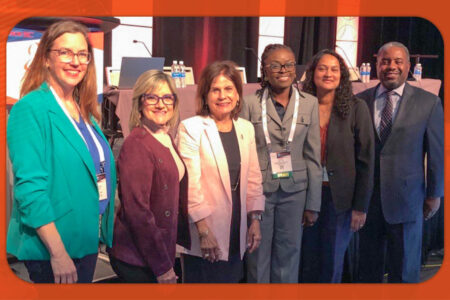
Share On Social!
People with wealth often enjoy good health.
People who live in poverty often suffer worse health.
This income inequity is simple on the surface. But it has layers of complexity that unfold differently for different people, especially Latinos who face large wage gaps and health issues and warrants action from across sectors to promote health equity.
Here is a deep dive into income inequity and Latino health.
Why Do Wealth Gaps & Income Inequity Occur?
The reasons for wealth gaps are complex.
Systemic under-investment is a contributing factor, some experts say.
“The ‘neo-materialist’ hypothesis suggests there is systematic under-investment in social infrastructure and services in more unequal societies,” writes Sharon Friel for The Conversation. “Social infrastructure influences the level of individual financial resources and provides services such as education, health services, transportation and housing.”
 Other issues, such as racism and discrimination, also can spur income inequity among Latinos.
Other issues, such as racism and discrimination, also can spur income inequity among Latinos.
For example, Latinos face many prejudices, racism, and discrimination early in life. Inequitable access to quality, affordable early care and education can prevent future opportunities to achieve more in the future.
Other social, economic, and political factors come into play as well.
“The income and wealth divide is a result of systematic discriminatory treatment of communities of color, such as massive federal investments that ultimately built the post-World War II middle class (i.e., New Deal & the GI Bill of 1944, that intentionally excluded communities of color),” writes Stacy Cantu for Salud America!
What Are the Health Outcomes of Wealth Gaps and Income Inequity?
Researchers have found that people who have plenty of money have:
- Lower death rates
- Lower rates of chronic diseases (heart disease, diabetes, cancer)
- Better mental health and social/emotional development
- Better ability to function in daily life
- Lower rates of smoking
- Less obesity
- Lower levels of asthma and finally, their Social-emotional development is better.
At the same time, studies frequently highlight the health plight of low-income people.
While financial security reduces stress, financial insecurity can cause stress, according to social scientists. Chronic stress can lead to health deterioration and chronic illnesses.
Low wages also impact people’s ability to access health-promoting assets.
For example: Only 10% of U.S. counties are full-time workers and they can afford a modest apartment in the rental market.
“The research found that employees need to make an average hourly wage of $22.96, or roughly $47,757 annually, to afford a two-bedroom apartment,” writes Pramod Sukumaran for Salud America! “However, the average hourly wage among renters is $14.32, making the affordable housing out of the reach for the low-income renters.”
Transportation and housing are two important ways to get out of poverty.
Yet Latinos and others who often work in low-paying jobs often don’t have the luxury of living close to their work because they can’t afford housing. They live further away from work and have to rely on public transit—which is, to put it bluntly, often unreliable.
This puts them further away from health-promoting assets like healthy food options, health care, and places for safe physical activity, according to a Salud America! research review.
What Income Inequities Do Latinos Face?
Latino and other minority youth experience higher rates of poverty than their white peers.
In Texas, for example, Latinos and other communities of color are among the hardest hit by medical debt, due to systemic racism. Latino-owned businesses struggle with bias and racism when it comes to securing financing. Latinos also face mortgage loan discrimination, redlining.
 The stats are even more shocking:
The stats are even more shocking:
- Latinos do not participate in investment such as retirement accounts for stocks and bonds.
- White families are twice as likely as Latino families to own retirement accounts. They are also four times more likely to own stocks, and more than seven times more likely to own pooled investment funds, according to Hispanic Wealth project
- The wealth disparity by race is huge. The median wealth of white households ($141,900) was 12.9 times the median wealth of black households ($11,000) and 10.3 times the median wealth of Hispanic households ($13,700), according to a recent report.
- Level of education can change the wealthy. Whites who don’t earn a college degree earn an income of $81,650, more than Latinos ($17,400). Whites also earn more with college degrees ($325,600), compared to $91,80 for Latinos. As of 2017, 15.2% of Latinos had a bachelor’s degree or higher, compared to 34.5% of whites.
- Latino wealth is often derived from home equity. A study by Urban Institute found that Latino families will account for 56% of new homeowners by 2030. The number of White homeowners will decline as the predominantly home-owning Baby Boomers continue aging.
- Latino labor force participation is strongest and their education level growth remarkable. “It should not come as a surprise that Latinos will power the U.S. economy to a better future.”
An important thing to keep in mind is that Latinos do not choose to live in poverty.
A recent study found that poverty is not attributed to a lack of parental employment, as many assume. Researchers also found that low-income Latinos—unlike their white and black peers—cite earnings from wages alone as their only source of income stability.
“This knowledge should enable us to rethink policy,” said Lisa A. Gennetian of Duke University. “Higher wage benefits and flexible paid-time-off benefits could go a long way in helping Latino parents as they try to provide for their children.”
How Can We Help Latinos Build Wealth and Health?
Reducing poverty and income inequities is a key step toward better health for Latinos.
ChangeLab Solutions recently devised a blueprint to address this issue.
- Preserve, protect, and expand social protections by providing supplemental income to support healthy living (i.e., the SNAP program or housing subsidies).
- Improve wages for poor and low-income individuals.
- Reduce the cost of housing, education, transportation, and health care by preserving, protecting, and expanding affordable housing; subsidizing preschool and college for kids from low-income families; expanding public transit; and subsidizing health insurance.
- Paid family leave also can reduce the use of public services and help families succeed.
The American Psychological Association also had these recommendations:
- Develop and pursue the best moments to invest in health and economic well-being during the life course.
- Provide resources to educate and inform about the connection between wealth and health.
- Build awareness about maintaining healthy behaviors and the relationship between health and wealth.
- Promote and support asset-building and health research.
- Focus on early care and education. Low-income kids often start school a step behind, setting them on a negative path throughout their lives.
- Change or reform social and economic policies to reduce inequity and promote health.
- Focus the health system on preventive health care.
Solving the wealth/health inequity won’t be easy.
But the future health of our nation depends on it.
“As a society, we need to redress the inequities in people’s material resources, the degree of control they have over the conditions that affect their lives and the amount of political voice they can express,” writes Friel for The Conversation.
Explore More:
Understanding & Reducing PovertyBy The Numbers
23.7
percent
of Latino children are living in poverty




